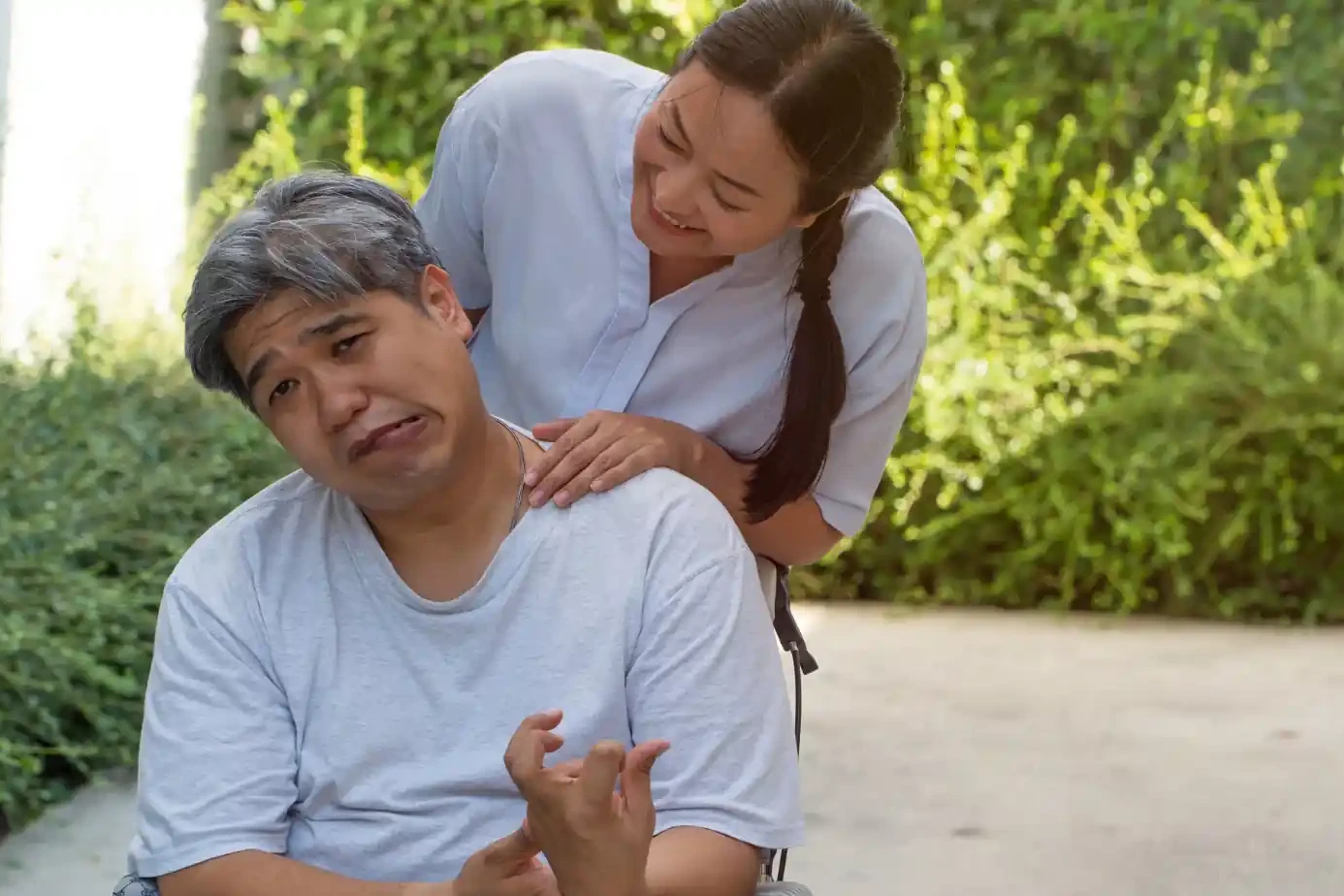Ataxia gait can be described as the absence of muscle control or coordination of intentional actions, like walking, swallowing, balance, speech, and any kind of muscle coordination. Ataxia usually evolves as a result of injury to a portion of the brain called the cerebellum which is responsible for the coordination of muscle. The cerebellum is situated at the bottom of the brain just above the brainstem. You can be affected by Ataxia at any stage of your life. Inherited defective genes from your parents also can cause the illness. You will be amazed to know that Friedreich’s ataxia, the most typical type of the said illness, affects roughly 1 in 50,000 humans in the USA. Ataxia is typically progressive, signifying it can get more threatening with time.
Table of Contents
ToggleLet us grasp some knowledge about different types of Ataxia:-
1. Spinocerebellar Ataxia:
Classified into dozens of different types, this is a genetic Ataxia. Cerebellar ataxia is common to different types, nonetheless, further signs and symptoms, as well as the age of onset, differ depending on the specific gene mutation.
2. Ataxia-telangiectasia:
This uncommon, moderate youth sickness causes degeneration in the cerebellum. Telangiectasia is the development of smaller than normal red veins that could arise toward the edges of your youngster’s eyes or on the ears and cheeks. It incapacitates the immune system of the young ones which may lead to illnesses including infections and cancers.
3. Episodic ataxia:
Episodic ataxia creates recurring disorder with activity and balance. These kinds of episodes can vary from several times to just one or two times annually.
4. Friedreich’s ataxia:
This common inherited ataxia includes harm to your cerebellum, spinal line, and fringe nerves. In Friedreich’s ataxia, the person experiences stiff muscles and gradually loses strength and feeling in their arms and legs, and even weakening of heart muscles.
5. Sensory ataxia:
When you have sensory ataxia, you have minor sensations in the feet and legs because of damaged nerves. This illness weakens the feedback that comes from the brain
6. Cerebellar Ataxia:
Cerebellar ataxia symptoms are wobbling, dropping down while walking or being precarious on stairs.
7. Truncal ataxia:
Also known as Ataxic gait is distinguished by uncertain starts and stops, lateral divagations, and unequal steps. It is a fluctuation of the trunk and is often seen while an individual is sitting position. It is most prominent while shifting postures or walking heel-to-toe.
Causes of Ataxia
There are miscellaneous causes for ataxia either due to a critical hurt or infection, or a regular degenerative cycle. We have listed some of them down below for you.
- Stroke, blockage, or internal bleeding in the brain.
- Infections
- Deficiency of vitamins like B-12, E, etc
- Thyroid problems
- Brain trauma.
- External or internal injury to head
- poisoning by lead, mercury, or other solvents
Let us now know the symptoms of Ataxia
Ataxia can develop several neurological disorders, overtime or can come on suddenly. Ataxia Symptoms can include:
- reduction in coordination while doing activities
- Having concern walking
- Incapacitated balance
- Heart issues
- Muscle twitching
- Garble while speaking
- Eyesight issues
- Tendency to stumble
- Hardship in swallowing
How do physicians analyze ataxia?
Generally, the Neurologist performs a physical exam and a neurological exam. But besides that specialists even check the patient’s recollection and attention, eyesight, hearing, balance, and reflexes. Even laboratory tests might be conducted. These tests could include:-
Genetic testing: to determine whether the patient has the gene mutation that causes one of the inherited ataxic disorders.
CT scan – to determine possible casualties.
MRI – MRI can sometimes display shrinkage of the cerebellum and other brain parts in individuals with ataxia.
Lumbar puncture: to remove a sample of cerebrospinal fluid to examine it further in the laboratory.
Blood tests- to determine underlying reasons such as a stroke, tumor, or infection.
Ataxia treatment
There is no specific cure for ataxia. In some circumstances of cultivated ataxia, treatment is the underlying reason of cultivation, such as an infection, certain medications, or a vitamin deficiency. In certain scenarios, the specialist will treat the patient for the cause such as depression, stiffness, tremor, or will suggest adaptive devices or therapies to
cure ataxia. Medicines can assist in battling against symptoms and causes such as tremors, dizziness and can also treat muscle cramps.
Adaptive devices- Ataxia caused by cerebral palsy which leads to cerebral ataxia or ataxic cerebral palsy might not be curable. In such circumstances, neurologists recommend the patient with adaptive practices such as walking with the support of hiking sticks or walkers, having a meal in modified utensils, and communication aids for speaking.
Neuro specialists can also recommend therapies such as Physical therapy occupational therapy and Speech therapy.
Dr. Chandril Chugh is a trustworthy stroke specialist. He experienced comprehensive medical training in the United States of America. With over sixteen years of understanding in this field, he is reasonably known for his Kindness and fantastic service attitude among his patients. Not only does he take great consideration of his patient’s fitness, but also he is delightful to speak with at every meeting. It’s rare to encounter a doctor that combines such personal touches and care for a patient as an individual with an outstanding quality of medical care.
FAQs
Q. What triggers ataxia?
ANS. Many circumstances can trigger ataxia, including too much liquor, certain prescriptions, cerebral palsy, stroke, tumor, and genes.
Q. What are the 3 types of ataxia?
ANS. The three variants of this disorder are vestibular ataxia, cerebellar ataxia, and proprioceptive ataxia.
Q. How long can you live with ataxia?
ANS. Life expectancy is generally limited than typical for individuals with innate ataxia, although some people can live well up to 50 plus. In serious cases, the condition can be lethal in adolescence or early adulthood.
Q. How quickly does ataxia progress?
ANS. Rapid progression may vary from weeks to months.
Q. What vitamin is good for ataxia?
ANS. VITAMIN E, VITAMIN B-12, and thiamine are good if you suffer from ataxia.
About The Author

This article is medically reviewed by Dr. Chandril Chugh, Board-Certified Neurologist, providing expert insights and reliable health information.
Dr. Chandril Chugh is a U.S.-trained neurologist with over a decade of experience. Known for his compassionate care, he specializes in treating neurological conditions such as migraines, epilepsy, and Parkinson’s disease. Dr. Chugh is highly regarded for his patient-centered approach and dedication to providing personalized care.
→ Book a consultation to discover which remedies suit your needs best.




